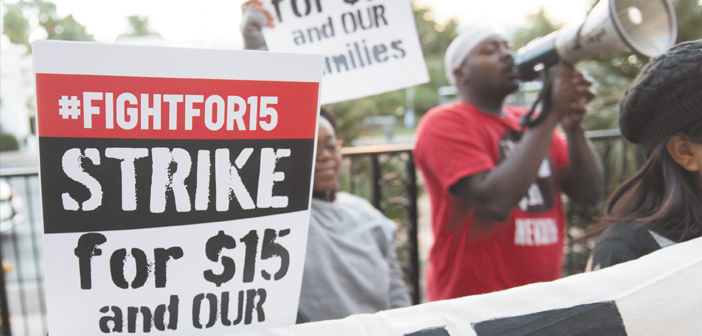Public policy should focus on trying to raise the wage ceiling for working Americans.
by Alfredo Ortiz
According to a recent Gallup poll, only 30 percent of Americans are satisfied with the direction of the country – a drop of 40 percent since the early 2000s.
The decline in contentment can be attributed to various factors, but a top concern is financial security – with over half of Americans worried about their ability to maintain their current standard of living. And their fears are not unsubstantiated. The median wages in the U.S. remain below their 1990s levels, and half of 30 year olds earn less than their parents did at the same age.
In an attempt to combat these low wages, some are pushing for mandatory entry-level wage increases – such as in the Fight For $15 campaign. But there’s one problem – entry-level wages are for, exactly as it sounds, entry-level workers. These wages are not meant to feed a family of four, but instead to equip young people, who are just starting out in the workforce, with basic job skills.
The numbers support this analysis. A majority of entry-level wage earners are young people – between the ages of 16 and 24. In fact, only 395,000 people aged 25 or older earn the minimum wage – which comes out to roughly half a percent of the nation’s hourly workforce.
These entry-level positions are an important part of the American economy because they provide employees with the skills to move on to good middle-class jobs. Entry-level jobs act as training wheels for workers as they earn the necessary skills to jump to the next level of their careers – making more money and holding more skilled positions as they navigate professional life.
In fact, research shows that those who learn these basic work skills early in their careers earn 20 percent more than their peers down the road.
Entry-level wage mandates disrupt this process. As employers are forced to provide more compensation for entry-level work, their labor costs skyrocket and they are forced to cut back on entry-level job opportunities, preventing jobseekers from getting their first jobs, which prevents them from getting good jobs later.
This is why instead of attempting to artificially raise the wage floor, we need to focus on expanding opportunities for people to make good $50,000 a year middle-class salaries – what we call the Fight for $50. In other words, rather than trying to raise the wage floor, public policy should focus on trying to raise the wage ceiling for working Americans.
And the good news is many of these jobs already exist and are waiting for people with the necessary skills and experience to fill them. According to the Department of Labor, there are 5.5 million of these openings that pay approximately $50,000 or more a year.
Yet with tens of millions of Americans still unemployed and underemployed, why aren’t these jobs being filled? A big reason is because of the so-called skills gap. Over half of these open jobs require some training beyond a high-school degree.
The hospitality sector is doing its part to bridge the skills gap by training hundreds of thousands of employees each year and providing them with the skills they need to get higher-paying jobs – either within the hospitality sector or outside of it.
As barriers like a $15 minimum wage block industries – such as hospitality – from educating the workforce with the basic skills to achieve well-paying careers, we must point out that the best way to expand the earning potential of Americans is by fighting for $50,000 careers, not for opportunity-killing $15 an hour mandates. ■
Alfredo Ortiz is the president and CEO of the Job Creators Network. For more information about Job Creators Network, visit JoinJCN.com.




